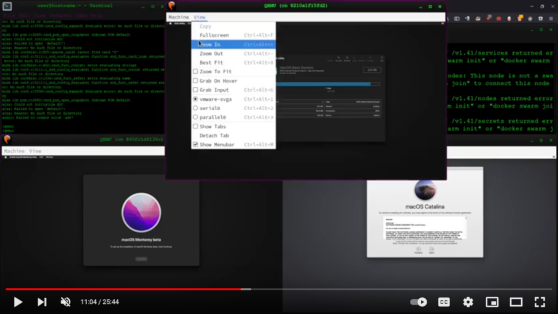

Make sure Swarm is selected and hit Apply if needed. Open Docker Desktop and select Preferences-> Kubernetes. Give it a try with a few simple steps.įirst, make sure you are using Swarm as your orchestrator. Swarm uses the Docker command line or the Docker Compose file format with a few additions. Managers run the swarm cluster, making sure nodes can communicate with each other, allocate applications to different nodes, and handle a variety of other tasks in the cluster. Swarm mode uses managers and workers to run your applications. After joining a swarm, they are referred to as nodes. The machines in a swarm can be physical or virtual. After that has happened, you continue to run the Docker commands you’re used to, but now they are executed on a cluster by a swarm manager. Docker Desktop is the easiest way to get started with either Swarm or Kubernetes.Ī swarm is a group of machines that are running Docker and joined into a cluster. If you've read anything about Docker, you have probably heard of Kubernetes and Docker swarm mode. While it is easy to run an application in isolation on a single machine, orchestration allows you to coordinate multiple machines to manage an application, with features like replication, encryption, load balancing, service discovery and more. To run it, open a command line and navigate to the same directory as the docker-compose.yml file. It also specifies the password, which you wouldn’t want to do in a real world situation. There’s a lot of details in there but basically you can see that it specifies the images to be used, the service names, the ports available, and networks the different services are on. To try it out, open a text editor and paste the text from this file. Docker Compose handles service discovery directly, allowing the app to reference the service directly and Docker will route traffic to the right container. We’ve pushed two images to the Docker Hub under the dockersamples repo. You can check out the app in our dockersamples GitHub repo. This sample uses a simple Java web app running in Tomcat with a MySQL database. Docker Compose installs automatically with Docker Desktop.Ī multi-container app is an app that has multiple containers running and communicating with each other. Then, with a single command, you create and start all the services from your configuration.

With Compose, you use a YAML file to configure your application’s services. I agree that it's a mess my advice is to start with a single Dockerfile and get it running either with docker-machine or with the new beta native Mac/Windows Docker, and ignore docker-compose until you feel more comfortable with the lower-level tools.Easily connect multiple services togetherĭocker Compose is a tool for defining and running multi-container Docker applications. Its config file ( docker-compose.yml) is confusing since some of its settings are passed down to the lower-level docker process, and some are used only at the higher level. And its settings are saved in environment variables, which means you have to run commands like this every time you open a new shell: eval $(docker-machine env default)ĭocker-Compose is essentially a higher-level scripting interface on top of Docker itself, making it easier (ostensibly) to manage launching several containers simultaneously. Since Docker isn't running on your actual host OS, docker-machine needs to deal with IP addresses and ports and volumes and such. Oracle VirtualBox), runs Docker on that VM, and helps coordinate between the host OS and the Docker VM.
Mac os docker codeplay computercpp mac#
Until recently Docker didn't run on native Mac or Windows OS, so another tool was created, Docker-Machine, which creates a virtual machine (using yet another tool, e.g.

What is the docker-machine for? What is the sense? Why docker doesn't syncing files after changes? It looks like docker + docker-machine + docker-compose are pain in the a.s for local development :-)ĭocker is the command-line tool that uses containerization to manage multiple images and containers and volumes and such - a container is basically a lightweight virtual machine. So I logged to the "dev" machine: $ docker-machine ssh devĪnd I didn't find my code! So I logged to the docker "web" image: $ docker exec -it project_web_1 bash
Mac os docker codeplay computercpp code#
But when I made some changes in my code - nothing happened. I checked ip of my virtual machine $ docker-machine ip devĪnd successfully opened the site in my browser. Then I wrote Dockerfile and docker-compose.yml: FROM python:2.7Ĭommand: python manage.py runserver 0.0.0.0:8000įinally, I built and started the image: $ docker-compose build -no-cache First, I created docker-machine: $ docker-machine create -d virtualbox dev


 0 kommentar(er)
0 kommentar(er)
